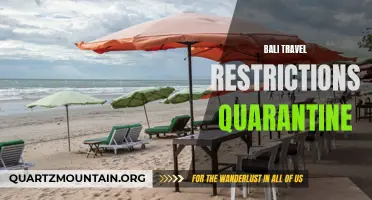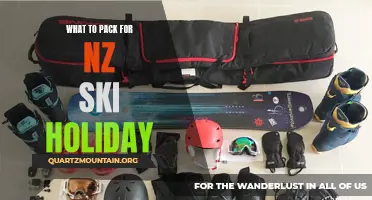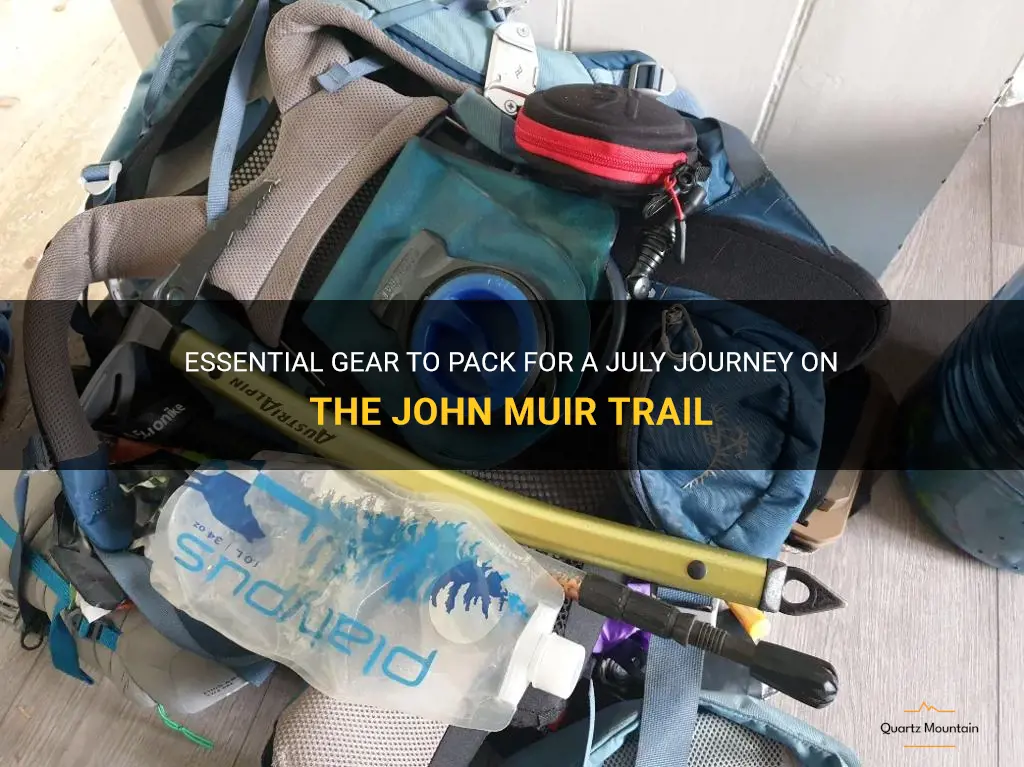
Are you an adventurer at heart? Do you have a deep appreciation for the great outdoors? If so, then a journey on the John Muir Trail in July might just be the perfect expedition for you. As you prepare for this unforgettable experience, it's essential to pack the right gear to ensure your safety and comfort. From sturdy hiking boots to lightweight camping gear, this article will guide you through the essential gear you need to pack for your July journey on the John Muir Trail. So, lace up your boots, grab your backpack, and get ready for a thrilling adventure on one of the most breathtaking trails in the world.
| Characteristics | Values |
|---|---|
| Clothing | Lightweight, moisture-wicking, quick-drying, layerable |
| Footwear | Sturdy hiking boots, extra socks |
| Shelter | Lightweight tent, sleeping bag, sleeping pad |
| Backpack | Lightweight, comfortable, with a capacity of 50-65 liters |
| Food | Lightweight, high-calorie, easy to cook |
| Water | Water filter or purifier, water bottles or hydration bladder |
| Navigation | Map, compass, GPS or smartphone with navigation app |
| First Aid Kit | Bandages, antiseptic ointment, pain relievers, insect repellent |
| Toiletries | Toothbrush, toothpaste, toilet paper, hand sanitizer |
| Cooking Gear | Stove, fuel, cookware, utensils |
| Sun Protection | Sunscreen, hat, sunglasses |
| Bug Protection | Bug spray, head net |
| Lighting | Headlamp, extra batteries |
| Repair Kit | Duct tape, multi-tool |
| Emergency Gear | Whistle, emergency blanket, emergency shelter |
| Personal Items | Camera, book, journal, entertainment |
| Misc. | Trekking poles, bear canister (required), cash for resupplies |
What You'll Learn
- What are the essential items to pack for a July hike on the John Muir Trail (JMT)?
- Should I pack a tent or a hammock for camping along the JMT in July?
- How many pairs of socks and underwear should I pack for a July hike on the JMT?
- Are there any specific clothing items that are recommended for a July hike on the JMT?
- What kind of food should I pack for a July hike on the JMT, considering the temperature and duration of the hike?

What are the essential items to pack for a July hike on the John Muir Trail (JMT)?
_20240228094409.webp)
The John Muir Trail (JMT) is a popular hiking trail that stretches for 211 miles through the stunning Sierra Nevada mountain range in California. Hiking the JMT in July offers breathtaking views of snow-capped peaks, alpine lakes, and vibrant wildflowers. However, it is essential to be well-prepared with the right gear and equipment for a safe and enjoyable hiking experience. In this article, we will explore the essential items to pack for a July hike on the John Muir Trail.
- Backpack: A sturdy and comfortable backpack is essential for carrying all your gear. Look for a backpack with a capacity of at least 50 liters to accommodate your clothing, food, and camping equipment.
- Tent: Invest in a lightweight and durable tent that can withstand various weather conditions. July is generally a dry month on the JMT, but it is always better to be prepared for sudden rain showers or storms.
- Sleeping Bag: Choose a sleeping bag that is suitable for the expected temperatures along the trail. July nights can still be chilly in the higher elevations, so a bag with a temperature rating of around 20-30 degrees Fahrenheit is recommended.
- Sleeping Pad: A sleeping pad provides insulation and comfort while sleeping on the ground. Opt for a lightweight and compact sleeping pad that offers sufficient cushioning.
- Clothing: Dressing in layers is crucial for hiking in changing weather conditions. Pack lightweight and moisture-wicking clothing that can be easily layered. Include a long-sleeve shirt, a lightweight down jacket, rain gear, hiking pants, and a sun hat.
- Footwear: Invest in a pair of sturdy hiking boots that provide ankle support and are comfortable for long distances. July is a great time to hike the JMT as the trails are mostly snow-free, but there may still be some patches of snow in higher elevations, so consider bringing traction devices like microspikes.
- Food and Water: Plan your meals and pack lightweight and nutritious food. Consider dehydrated meals, energy bars, and trail mix. It is crucial to carry enough water or a water filtration system, as water sources can be scarce along the trail.
- Navigation: Carry a detailed map or a GPS device to navigate the trail. The JMT is well-marked, but it is always wise to have a backup navigation system.
- Personal Hygiene: Don't forget to pack essential hygiene items like biodegradable soap, wet wipes, hand sanitizer, and toilet paper. Practice Leave No Trace principles and dispose of waste properly.
- First Aid Kit: Prepare a first aid kit that includes essential items like bandages, blister pads, pain relievers, insect repellent, and any necessary prescription medications.
- Safety Equipment: Pack a headlamp with extra batteries, a whistle, a multi-tool, and a lightweight emergency shelter like a bivy sack. These items can be essential in case of emergencies or unexpected situations on the trail.
- Communication: While the JMT offers a chance to disconnect from the outside world, it is crucial to have a way to communicate in case of emergencies. Carry a fully charged mobile phone or a satellite communication device for emergencies.
Remember, proper preparation and careful planning are key to having a safe and enjoyable hike on the John Muir Trail. Research the trail conditions, weather forecasts, and pack accordingly. It is always a good idea to consult experienced hikers, review guidebooks, and check with the National Park Service for the most up-to-date information. Enjoy the incredible beauty of the JMT and have a memorable hiking adventure in July!
The Essential Gear Checklist for a Practice Ruck: Everything You Need to Pack
You may want to see also

Should I pack a tent or a hammock for camping along the JMT in July?
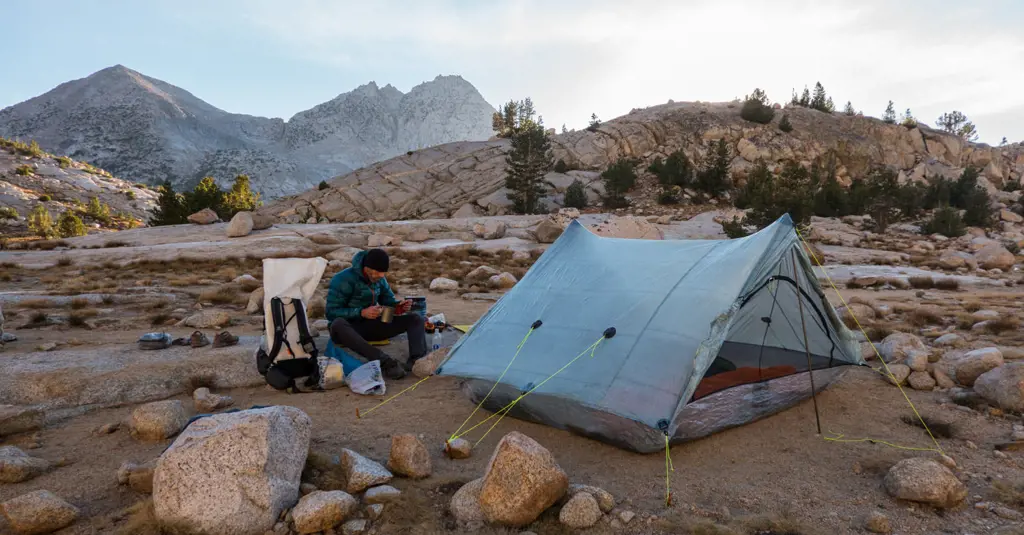
If you are planning a camping trip along the John Muir Trail (JMT) in July, one of the most important decisions you'll have to make is whether to pack a tent or a hammock for your sleeping arrangements. Both options have their pros and cons, and the choice ultimately depends on your personal preference and the specific conditions you expect to encounter on the trail.
Tents are the traditional choice for camping and offer several advantages. They provide a sturdy and reliable shelter that can protect you from the elements, including rain, wind, and bugs. This is particularly important if you expect a lot of rain or if you are camping at higher elevations where the weather can be unpredictable. Tents also provide privacy and a sense of security, which can be comforting, especially if you are camping alone or in a remote area. Additionally, tents generally offer more storage space for your gear and are better equipped to handle colder temperatures, as they provide better insulation.
On the other hand, hammocks have gained popularity among backpackers in recent years due to their lightweight and compact nature. Hammocks offer a unique and comfortable sleeping experience, as you can gently sway with the breeze and enjoy the sensation of being suspended in nature. They also eliminate the need to find flat ground for pitching a tent, which can be a challenge in rocky or uneven terrain. Hammocks are particularly advantageous in areas where trees are abundant, as they require anchor points for set-up. However, if you are planning to camp in a treeless area, a hammock may not be a suitable option.
Before deciding between a tent or a hammock, it is important to consider the specific conditions you will encounter on the JMT in July. The weather in the Sierra Nevada mountains can vary greatly, with hot and sunny days followed by cool nights and the potential for thunderstorms. While a tent can provide better insulation and protection from rain, a hammock can offer better ventilation and relief from the heat. It is also worth considering the availability of suitable camping spots along the trail, as not all areas may have the necessary trees for hammock set-up.
Ultimately, the choice between a tent and a hammock comes down to personal preference and the specific conditions of your trip. If you prioritize protection from the elements and privacy, a tent may be the better option. On the other hand, if you value lightweight and compact gear and enjoy the unique experience of sleeping in a hammock, then that may be the way to go. It may also be worth considering a hybrid option, such as a tent with a hammock attachment, which can offer the best of both worlds.
Regardless of your choice, it is important to test out your gear before embarking on the JMT. Set up your tent or hammock in your backyard or a local park to ensure you are comfortable and familiar with the set-up process. This will help you avoid any surprises or frustrations on the trail.
In conclusion, the decision to pack a tent or a hammock for camping along the JMT in July depends on your personal preference and the specific conditions of your trip. Consider factors such as weather, availability of suitable camping spots, and your own comfort and prioritize accordingly. Whether you choose a tent, a hammock, or a combination of both, make sure to test out your gear beforehand to ensure a smooth and enjoyable camping experience on the JMT.
How to Safeguard Your Belongings: Essential Items to Pack for Costa Rica to Prevent Theft
You may want to see also

How many pairs of socks and underwear should I pack for a July hike on the JMT?
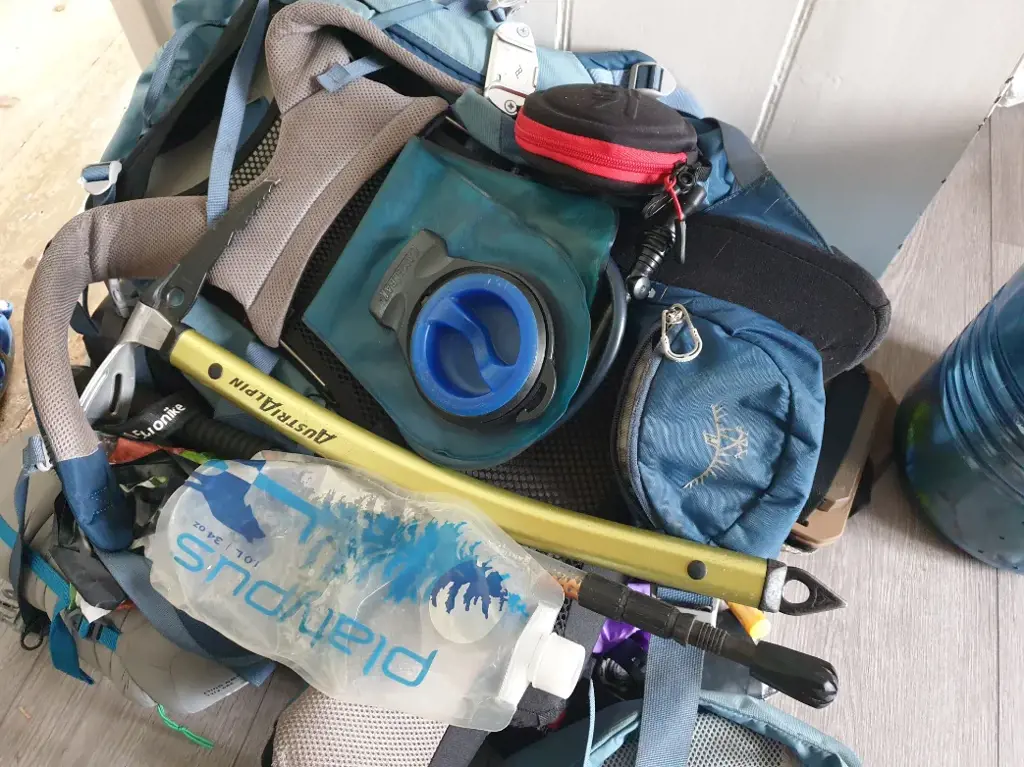
When embarking on a long-distance hike such as the John Muir Trail (JMT) in July, it is important to pack the right amount of socks and underwear to ensure comfort and hygiene throughout your journey. While the specific number may vary depending on personal preferences and the duration of your hike, there are some general guidelines that can help you plan.
- Consider the duration of your hike: The length of your hike will play a significant role in determining the number of socks and underwear you should pack. The JMT is approximately 211 miles long, and most hikers take around 2 to 3 weeks to complete the trail. Therefore, it is advisable to pack enough socks and underwear for each day of your trip.
- Prioritize moisture-wicking materials: When choosing your socks and underwear, opt for moisture-wicking fabrics such as merino wool or synthetic blends. These materials will help keep your feet and body dry by wicking away sweat and moisture. Moisture-wicking socks and underwear also help prevent blisters and chafing, ensuring a more comfortable hiking experience.
- Pack extra socks: As socks are prone to getting wet or sweaty during a hike, it is recommended to bring at least one extra pair of socks for each day. This allows you to switch out damp socks and maintain dry feet, which is crucial for foot health and preventing blisters. Additionally, packing one or two pairs of thicker socks for colder nights or higher elevations can provide extra warmth and comfort.
- Consider the weather and terrain: July on the JMT is generally warm, but temperatures can vary depending on elevation and the time of day. It is important to pack socks and underwear suitable for both hot and cold weather conditions. Lightweight, breathable materials are ideal for the warm parts of the day, while thermal or thicker materials can be worn during cooler periods.
- Personal hygiene and comfort: Maintaining personal hygiene is crucial during a long-distance hike to prevent odor and infections. It is recommended to change your underwear daily and wash them when possible. Carrying a small supply of biodegradable soap or detergent can help you clean your socks and underwear during rest days or at water sources along the trail.
- Test and acclimate your gear: Before embarking on the JMT, it is essential to test your socks and underwear during practice hikes or overnight trips. This will help you assess their performance, comfort, and durability, allowing you to make any necessary adjustments to your packing strategy.
In conclusion, when planning for a July hike on the John Muir Trail, it is advisable to pack enough socks and underwear for each day of your trip. Consider the duration of your hike, prioritize moisture-wicking materials, pack extra socks, consider the weather and terrain, prioritize personal hygiene and comfort, and test your gear beforehand. By following these guidelines, you can ensure a comfortable and enjoyable hiking experience on the JMT.
Essential Items to Pack for an Amazing Trip to Cyprus
You may want to see also

Are there any specific clothing items that are recommended for a July hike on the JMT?
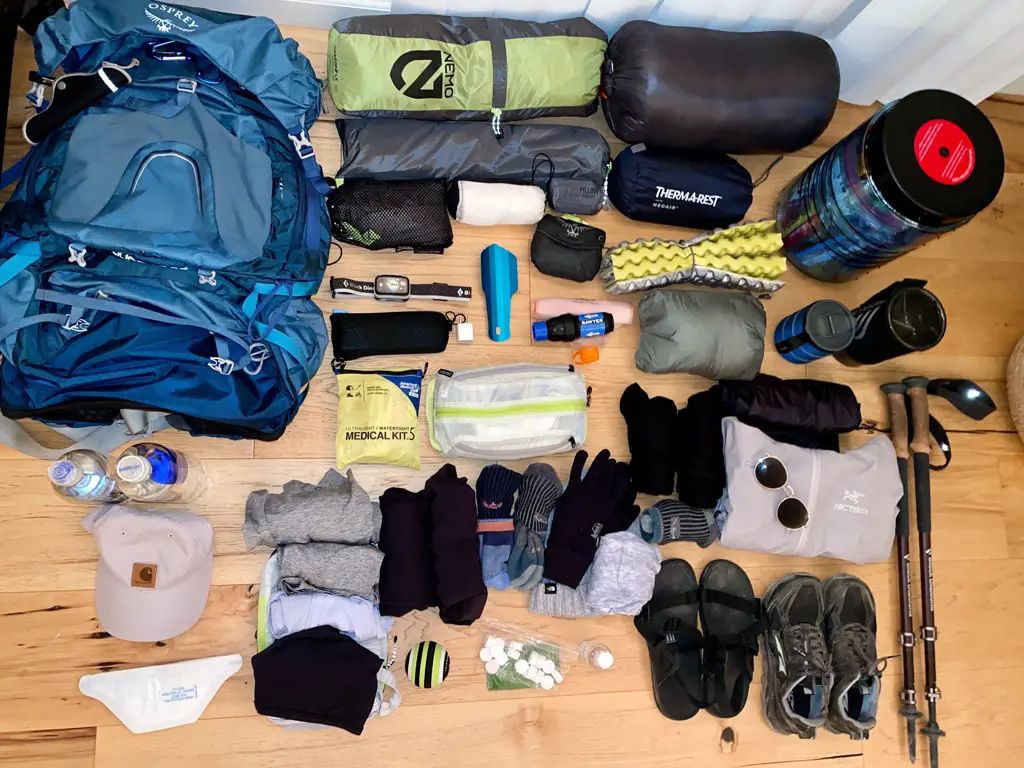
The John Muir Trail (JMT) is a popular backpacking trail that stretches for 211 miles through the Sierra Nevada mountains in California. Hiking the JMT in July can be a rewarding experience, but it is important to be prepared for the varying weather conditions and terrain that you may encounter along the way. In order to ensure a safe and comfortable hike, there are several specific clothing items that are recommended for a July hike on the JMT.
First and foremost, it is important to have a good pair of hiking boots. The JMT is known for its rocky and rugged terrain, so a pair of sturdy and well-fitting hiking boots is crucial. Look for boots that provide ankle support and have a grippy sole to help tackle the steep and uneven trails. Break in your boots before setting out on the JMT to avoid blisters and discomfort.
Next, it is important to dress in layers. In July, the weather on the JMT can vary greatly from hot and sunny to cold and rainy. Start with a moisture-wicking base layer that will keep sweat away from your skin and help regulate your body temperature. On top of this, add a breathable and lightweight long-sleeve shirt for sun protection and to provide an extra layer of warmth when needed. Carry a lightweight and packable rain jacket in case of unexpected rain showers.
For the lower body, lightweight and quick-drying hiking pants or shorts are recommended. Look for pants with built-in UV protection and plenty of pockets for easy access to items like a map or a snack. It is also a good idea to carry a pair of long underwear bottoms to provide extra warmth on chilly evenings or at high altitudes.
In terms of accessories, a wide-brimmed hat and sunglasses are essential for protecting your face and eyes from the sun's harmful rays. Additionally, a lightweight and breathable buff or bandana can come in handy for protecting your neck from the sun or for wiping away sweat. Don't forget to apply sunscreen regularly to any exposed skin, regardless of the weather conditions.
It is also important to choose the right socks for a long-distance hike like the JMT. Look for socks made from moisture-wicking and quick-drying materials that provide cushioning and support. Consider bringing a spare pair of socks to change into if your feet get wet or blistered.
Lastly, invest in a comfortable backpack that is specifically designed for long-distance hiking. Look for a pack with plenty of organizational pockets, adjustable straps, and a comfortable suspension system. Take the time to properly adjust the pack to your body shape and distribute the weight evenly to avoid discomfort or back pain.
In conclusion, a July hike on the JMT requires specific clothing items to ensure comfort and safety. These include sturdy hiking boots, breathable and moisture-wicking clothing layers, a lightweight rain jacket, UV protection accessories, moisture-wicking socks, and a comfortable backpack. By being prepared with the right gear, you can fully enjoy the beauty and challenges of hiking the JMT in July.
Your Ultimate Guide to Packing for a Trek America Southern Sun Adventure
You may want to see also

What kind of food should I pack for a July hike on the JMT, considering the temperature and duration of the hike?
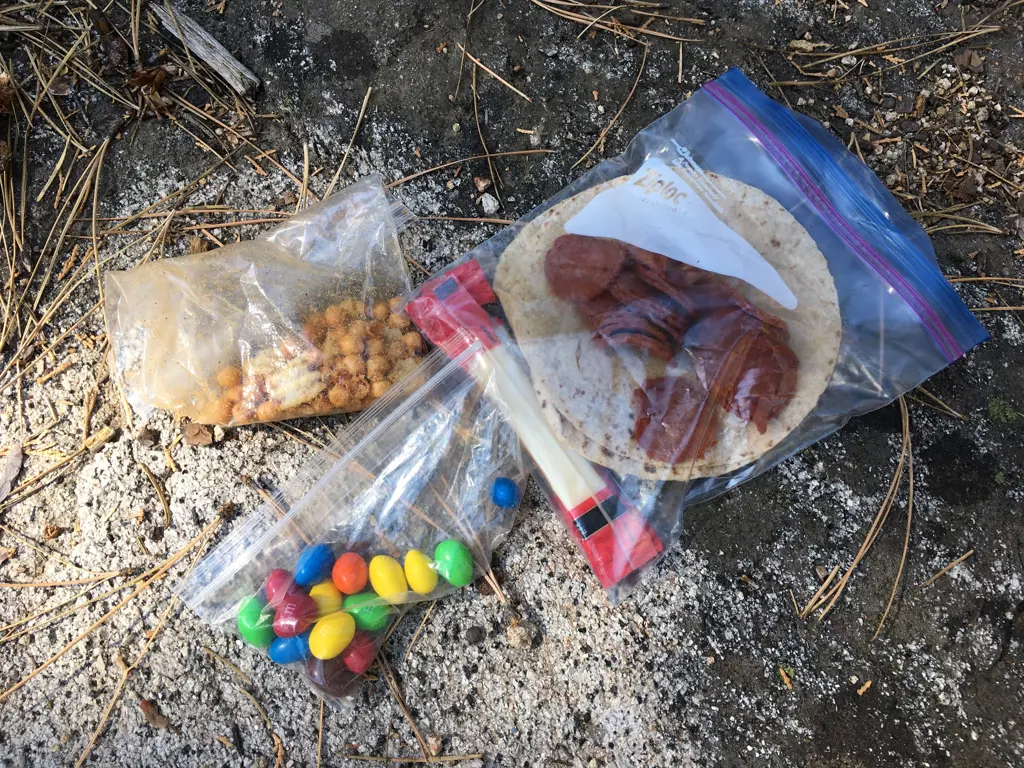
When planning a hike on the John Muir Trail (JMT) in July, it is important to consider the temperature and duration of the hike when packing food. The JMT is a popular and challenging trail that stretches for 211 miles through the Sierra Nevada Mountains in California. The July temperatures can vary, ranging from warm and sunny during the day to cool and possibly even freezing at night, depending on the elevation.
To ensure you have enough energy to sustain you throughout the hike, it is important to pack food that is lightweight, easy to prepare, and provides a good balance of carbohydrates, proteins, and healthy fats. Here are some food options to consider:
- Dehydrated Meals: These lightweight and easy-to-pack meals are a popular choice among hikers. They typically come in a variety of flavors and can be rehydrated by adding hot water. Look for options that are high in calories and provide a good mix of nutrients.
- Trail Mix and Energy Bars: These are great options for quick snacks while hiking. Look for trail mixes that contain a mix of nuts, dried fruits, and seeds. Energy bars should be high in carbohydrates and provide a good source of protein to keep you fueled throughout the day.
- Nut Butter: Peanut butter or almond butter is a great source of healthy fats and protein. Pack a small jar or individual packets to spread on crackers or bread for a quick and easy snack.
- Instant Oatmeal: A hot and filling breakfast option, instant oatmeal is lightweight, easy to prepare, and provides a good source of carbohydrates. You can add dried fruits, nuts, or nut butter for extra flavor and nutrients.
- Jerky and Dried Meat: These protein-packed snacks can help replenish energy and keep you feeling full. Look for options that are low in sodium and preservatives.
- Fresh Fruits and Vegetables: While fresh produce may not last the entire duration of your hike, you can pack fruits and veggies that are more durable, such as apples, oranges, carrots, and snap peas. These can provide a refreshing and nutritious break from the trail mix and dehydrated meals.
- Electrolyte Replacement Drinks: With the potential for hot temperatures, it is crucial to stay hydrated and replenish electrolytes lost through sweating. Pack some electrolyte replacement drinks or powders to mix with water and stay properly hydrated.
Remember to pack enough food to last the duration of your hike and plan for any additional days in case of unexpected delays. It is also important to properly store your food to prevent wildlife from accessing it. Use bear canisters or hang your food from a tree away from your campsite.
In conclusion, when planning a July hike on the JMT, consider the temperature and duration of the hike when packing food. Choose lightweight, nutrient-dense options that provide a good balance of carbohydrates, proteins, and healthy fats. Plan for a variety of snacks and meals that are easy to prepare and will keep you fueled throughout your journey on the beautiful John Muir Trail.
The Essential Food Guide for Your Patagonia Adventure
You may want to see also
Frequently asked questions
In July, the weather on the JMT can vary greatly, so it's important to be prepared for a range of conditions. It's a good idea to pack lightweight and moisture-wicking clothing to help keep you cool and dry while hiking during the day. This may include shorts, t-shirts, and a lightweight long-sleeve shirt for sun protection. Additionally, it's important to bring a warm layer for chilly mornings and evenings, such as a fleece jacket or down vest. Don't forget to also pack a rain jacket and pants in case of unexpected rain showers.
When it comes to camping on the JMT in July, it's important to have a sturdy and lightweight tent that can protect you from the elements. It's also a good idea to bring a warm sleeping bag that's rated for the temperatures you'll encounter on the trail, as nights can still be chilly in the high elevations. Additionally, a sleeping pad and pillow can help provide extra comfort during your nights on the trail. Other essential gear to pack includes a stove and cookware for preparing meals, a water filter for accessing clean drinking water, and a bear canister to store your food and prevent wildlife encounters.
In addition to clothing and camping gear, there are a few other essential items you'll want to pack for hiking the JMT in July. First and foremost, it's important to have a reliable map and compass, as well as a GPS device or navigation app on your phone to help you stay on track. It's also essential to pack a first aid kit with items such as bandages, disinfectant, and pain relievers to address any minor injuries or discomfort on the trail. Additionally, don't forget to bring sunscreen, insect repellent, a headlamp with extra batteries, and a lightweight towel for hygiene purposes. Lastly, be sure to pack enough food and snacks to sustain you throughout the duration of your hike, as well as a water bottle and water purification tablets or drops to ensure you have access to clean drinking water along the way.




